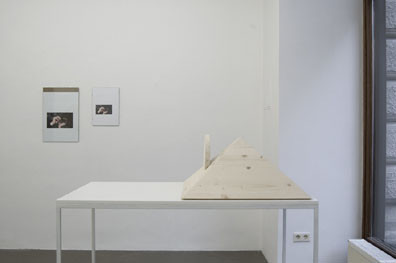Armando Andrade Tudela
19 Nov 2008 - 28 Feb 2009
ARMANDO ANDRADE TUDELA
19.11.2008–28.02.2009
In his work, Armando Tudela Andrade has been developing the idea of “units of information” - surfaces or modules of information that flow through different aspects of culture: history, architecture, vernacular paraphernalia, etc. Within this process, these surfaces become fields of contact or grounds into which several discourses are forced to migrate or move in acts of ever-increasing replacements or displacements. In tracing such moves he pretends, first, to decentralize the conditions under which signs and symbols become fixed and static; and secondly, to reinforce the idea that through the reconfiguration or the interruption of values, meanings and processes, one can create imaginary solutions to comprehend the immediate landscape and historical background more clearly.
In his research, he has been focusing on several ways in which aspects of modernity and contemporary culture have been assimilated and understood in Peru. Both processes have been overshadowed by an increasing need to transform external information into concrete and ordinary actions and, at the same time, to reconsider our own historical background in the face of a constant call for adaptation. Hence, these actions not only function as strategies to replace and displace unfamiliar information for applicable, “real” data, but also as alternative ways of keeping all information in transit and in motion. By the same token, these transformations become a flexible and extendable platform of dialogue and exchange, both of which are not only vital premises within his art work, but permanent metaphors of subversion, mobility and change.
19.11.2008–28.02.2009
In his work, Armando Tudela Andrade has been developing the idea of “units of information” - surfaces or modules of information that flow through different aspects of culture: history, architecture, vernacular paraphernalia, etc. Within this process, these surfaces become fields of contact or grounds into which several discourses are forced to migrate or move in acts of ever-increasing replacements or displacements. In tracing such moves he pretends, first, to decentralize the conditions under which signs and symbols become fixed and static; and secondly, to reinforce the idea that through the reconfiguration or the interruption of values, meanings and processes, one can create imaginary solutions to comprehend the immediate landscape and historical background more clearly.
In his research, he has been focusing on several ways in which aspects of modernity and contemporary culture have been assimilated and understood in Peru. Both processes have been overshadowed by an increasing need to transform external information into concrete and ordinary actions and, at the same time, to reconsider our own historical background in the face of a constant call for adaptation. Hence, these actions not only function as strategies to replace and displace unfamiliar information for applicable, “real” data, but also as alternative ways of keeping all information in transit and in motion. By the same token, these transformations become a flexible and extendable platform of dialogue and exchange, both of which are not only vital premises within his art work, but permanent metaphors of subversion, mobility and change.

